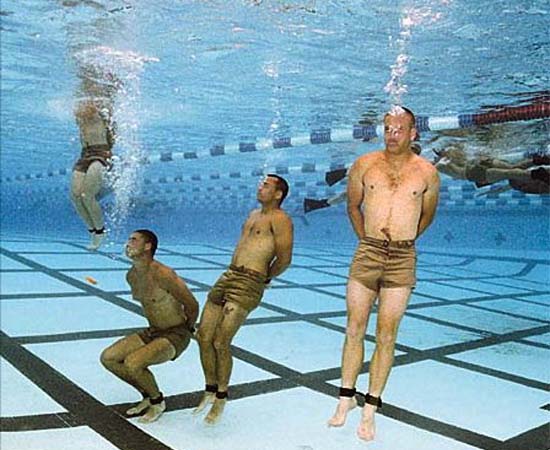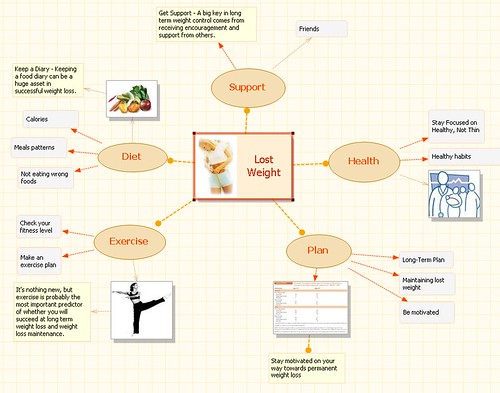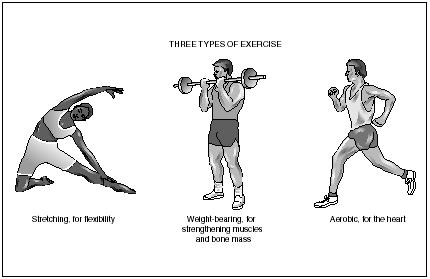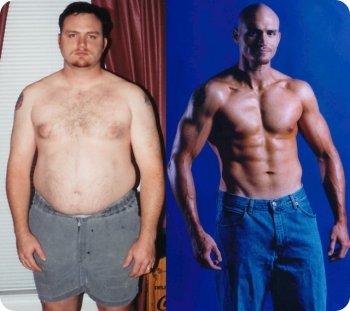Do you sometimes get bored with your aerobic exercise? Do You sometimes feel like you're not getting the results you should from your aerobic exercise? If so, then aerobic cross-training is for you.
Aerobic cross-training refers to using two to three different types of aerobic exercise during an exercise session. For example, if you plan to exercise for 60 minutes, you might start with 20 minutes of walking or jogging, followed by 20 minutes of biking, and finish with 20 minutes of rowing.
(JOGGING)
(BIKING)
Now, please don't get the impression that you have to be in great shape to do this or that it has to be 60 minutes long. You can start with something as simple as a ten minute walk followed by ten minutes with an exercise video. This is cross-training too. You can gradually build up from there.
Here are some of the exercises you can use in your cross-training program; walking, jogging, biking, rowing, stair climbing, swimming, exercise videos, etc. Any combination of aerobic exercises will do. You simply go from one to the next with very little time between them.
(SWIMMING)
(WALKING)
Aerobic cross-training is beneficial to you in several ways:
1. It provides variety which eliminates the monotony often associated with doing the same exercise for a long period of time.
2. If your exercise sessions are less monotonous and more enjoyable, you are much more likely to exercise more often and for longer periods of time.
3. You are less prone to over-use injuries that sometimes occur from doing the same exercise movements over and over again.
4. You tone more muscles because you are using more muscles. For example, walking tones mostly the lower body muscles and rowing tones upper body muscles also. Even exercises like walking and biking that both tone lower body muscles, tone them at different angles and each tones some small muscles that the other doesn't.
5. Aerobic conditioning is very specific to the muscles being worked. For example, you can walk ten miles a day and still be somewhat breathless after climbing stairs because you haven't trained the muscles for that specific movement. Aerobic cross-training allows you to develop more comprehensive aerobic training.
6. Aerobic cross-training is effective for weight loss because your are toning and training the fat-burning systems of more of your muscles. It turns more of your muscles into 24-hour fat-burning machines! You are also more likely to exercise on a regular basis and for longer periods of time. this also promotes weight loss and fitness.
Wednesday, August 29, 2007
Aerobic Cross Training for Weight Loss
Posted by
HAJA SHERIEF
at
3:39 PM
4
comments
![]()
Labels: Aerobics, Weight Loss
Tuesday, August 14, 2007
PHYSICAL FITNESS - 10 STEPS
There are 10 easy simple steps to follow for your physical fitness. Watch out below,
Posted by
HAJA SHERIEF
at
9:00 PM
3
comments
![]()
Labels: Fitness
FITNESS PRINCIPLES
Almost everywhere you go today, you are approached in some manner about health and physical fitness. The fact that a large percentage of world people are considered obese has helped increase the marketing of diet, physical fitness,and health products. You’ll be reminded of health and fitness on TV, in magazines, on the radio, the news, at work, almost everywhere you go you’ll see something about physical fitness.
With all this commotion about fitness, have you joined the team and started your path to total fitness? If not here is a brief description of the standards of physical fitness and what you may do about your current fitness level.
Most experts agree there are five basic components of fitness. They are:
1) Aerobic Endurance
Your level of aerobic endurance measures your ability to do moderately strenuous activity over a period of time. It’s a measurement of how
efficiently your heart and lungs work together to supply oxygen to your body during exertion and exercise. This fitness component is also called aerobic fitness.
2) Muscular Endurance
Muscular Endurance measures your fitness level by your ability to hold a particular position for a sustained period of time or repeat a movement many times. One example might be to lift a five-pound weight 20 consecutive times.
3) Muscular Strength
The ability to exert maximum force. It is possible to have greater muscular strength in one area, than another. For example, you may have great strength in your arms, while lacking strength in your legs. One example might be lifting the heaviest weight you can possibly lift. 
4) Flexibility
Flexibility fitness measures the ability to move a joint through its full range of motion or the elasticity of the muscle. This is how limber you are.
5) Body Composition
This fitness area measures the proportion of fat in your body as compared to your bone and muscle. It does not refer to your weight in pounds or your shape.
If you are weak in any area or need to begin a general overall fitness plan, there are basically three areas of exercise you should concentrate upon to make improvements. They are :
1.)STRETCHING

2.)AEROBIC ACTIVITY


3.)STRENGTH TRAINING 

Each of these areas is very important to your overall fitness level.
Eating a healthy diet will also contribute greatly to your overall fitness level.
Remember, it is never too late to improve your fitness level. Regardless of your physical fitness level, your age, or the length of time it has been since you last exercised regularly, it’s never too late to start and maintain a good fitness routine. Your body is designed to move. If you don’t use it, you lose it. It is just
that simple.
BENEFITS OF FITNESS
Posted by
HAJA SHERIEF
at
8:06 PM
2
comments
![]()
Labels: Fitness
SIX PACK ABS WITHOUT SUPPLEMENTS
There is a good reason why commercials for weight loss supplements always show rock-hard bellies with sharply defined abdominal muscles: everybody wants it.
The stomach is the number one area that most people would like to improve and the majority of those people will do almost anything to get those abs except for the one thing it requires: hard work.
That’s why supplements are so popular: they promise the results people desire without physical exertion or sweating. Whether or not these supplements actually do any good is up for debate.
The majority of supplements available on the market today use active ingredients that are not approved by government agencies as being safe for human use. Many times these special elements have no scientific evidence to back up their wild claims. Ingredients such as ma huang, ephedra, and aristolochia have been shown to produce adverse effects like heart palpitations, kidney failure, and, in the most extreme cases, even death. Herbal supplements have no regulatory agency in the United States and thus a manufacturer could put anything in a pill, call it herbal, and then sell it on the market without ever presenting any proof of safety or efficacy. Ingredients are only banned when enough people become ill to raise an alarm. Do you really want to be one of those people just to get the six-pack of your dreams?
The good news is that you can get a killer stomach without drugs or so-called herbal supplements. Through a carefully planned program of exercise, diet and hard work, you can change your belly into the abdominal muscles of your dreams. It may not be as easy as popping a couple of pills but the results are worth it and you will enjoy the reward even more since you earned every bit of it on your own.
The first thing you should do is find something to use as a record-keeper and plan book for your program. Exercise journals are fantastic for this purpose because as you enter daily information in the journal, you are putting together a complete record that can be referred back to in the future.
It can also be great encouragement for you to look at how far you’ve come in terms of weight loss and muscle gain. If you have a personal digital assistant (P.D.A.), find an application that allows you to track your workouts and personal statistics. There are dozens of companies that make programs for the P.D.A., so you are sure to find one that makes an application suitable for your handheld.
If you prefer to remain low-tech, buy a basic school notebook and use one page daily to record information about your exercise program. The important information you should be writing down is as follows:
Date (including time of day)
Weight
Exercise for the Day
Daily Meals
Measurements (once weekly)
Tracking this information will assist you in figuring out what works for you and what doesn’t. Writing down your daily meals is especially important – research shows that the most successful dieters are the ones who keep an honest food journal every day. When you have an accurate count of your daily intake of calories, it’s hard to deny the truth and eat another chocolate chip cookie. Be aware of your calories and you won’t overeat. 
Another trick from successful dieters is to weigh in daily. While some may disagree, keeping a daily record of weight acts as a check on overeating and skipping workouts – the desire to see the number on the scale drop can prevent any diet misbehavior. The best time to weigh yourself is in the morning as soon as you wake up and have emptied your bladder. Try to weigh at the same time every day for the most accurate assessment of your weight.
As far as measurements go, taking them weekly is appropriate – that allows enough time to see a real change so you do not become discouraged. You may want to consider measuring biweekly if you prefer to see more dramatic changes.

Once you are prepared with your exercise log, it is time to think about an exercise schedule. For the best results you should incorporate cardiovascular exercise with weight training and abdominal work. 
Exercising aerobically burns fat and calories, and decreases the amount of fat that lies over the abdominal muscles. Many times people do hundreds of sit-ups and never see a change in their bellies – that’s because unless you reduce the fat that covers the muscles, you can not see the definition underneath.Excellent choices for aerobic workouts are swimming, interval training, and speed walking.


You should ideally work out four to five times during the week. Strength training is also important because you need strong muscles in order to power your aerobic training. Additionally muscle burns more calories than fat and takes up less space, too.

The final part of your program is the abdominal work itself. Traditional sit-ups are fine but try moves with a twist for an extra boost in metabolism.
(SIT-UP)
Pilate’s moves are great for tightening abdominal muscles as is belly dancing.
There are a variety of moves and routines you can incorporate into your schedule to move you closer to your ultimate goal of six-pack abs.

Expect to spend at least three months working on your goal. Change doesn’t happen overnight, especially if you have more than five pounds to lose. Stick with it and manage your training log; before you know it, you will be sporting killer abs.
Posted by
HAJA SHERIEF
at
6:49 AM
191
comments
![]()
Labels: Exercises
Monday, August 13, 2007
WEIGHT LOSS MAP
A perfect map must be formulated by obese persons to reduce weight and they must stick consistent to the plan.
(CLICK IMAGE TO ENLARGE)
Posted by
HAJA SHERIEF
at
5:42 AM
2
comments
![]()
Labels: Pictures, Weight Loss
Sunday, August 12, 2007
Top 5 Fitness Myths

You’ve heard the stories: weight training makes women look like Arnold Schwarzenegger, exercising on an empty stomach burns more calories, and more. While some fitness myths make sense on the surface, deeper examination proves these stories are simply made up and have little or no basis in reality. Let’s tackle five of the most common myths and check out the real story behind them.

1. No pain, no gain– Perhaps the most common myth out there is this one that says if you don’t feel pain when you exercise, you are not doing it right. The truth is absolutely opposite: exercise done right should never be painful and professional trainers recommend that you stop your workout at the first sign of pain. The logic behind no pain, no gain says that you can not expect good results without sacrificing something – twisted at best, downright sadistic at worst. Exercise should be something you enjoy or else you very quickly become disillusioned and drop it entirely. While an intense workout may create slight discomfort, it should never get to the point where you are in actual pain.

2. Training with weights bulks women up – Few women want to look like professional bodybuilders, so this myth scares thousands of female exercisers away from weights every day despite scientific evidence to the contrary. The physiological differences between male and female bodies decree that men have a higher percentage of muscle throughout the body; thus men tend to increase bulk with weight lifting. On the other hand, female bodies have a higher percentage of fat to assist with childbearing and have less muscle to build and bulk up. Weight training for women is aimed at producing stronger muscles that can take more stress and bounce back better than ever.

3. Exercising on an empty stomach burns more calories – This one seems like it should make sense since exercise burns calories and an empty stomach has no calories to burn. It seems like you would be ahead of the game. Unfortunately, it does not work that way. Your body needs energy to run, so when you exercise on an empty stomach the body has to find fuel somewhere else. The body tries to provide energy while looking for it at the same time and can get overwhelmed, resulting in the risk of dizziness or even fainting in extreme situations. The smartest choice is to have a small snack about ten to fifteen minutes before working out. Carbohydrates are the best source of energy, so have a small slice of toast or a banana.

4. Crunches are the best way of firming up the stomach – Too many videos and articles send the message that hundreds of crunches are the best way to correct a jelly belly but fail to take into account that most saggy abs are because of excess fat, not weak muscles. Simply doing crunches alone strengthens the abdominal muscles but does not address the layer of fat over the muscles. You may see your stomach appear to grow larger since the muscles are gaining strength underneath the fat layer. The best strategy for getting firm abs is simple: burn fat and strengthen abdominal muscles at the same time. By using a two-pronged approach, fat that covers muscles is burned and the muscles are firmed at the same time, accomplishing your goal and giving you strong, sleek abdominal muscles.


5. Protein will help build muscles – Protein can do great things for your health but it will not help you increase your muscle strength. Too much protein in your diet can lead to unintended health risks such as kidney strain or dehydration. Extra protein also packs extra calories into your diet that can result in extra pounds – definitely not what you want. The best source of fuel for weight lifting is carbohydrates – easily digestible by the body, carbs provide fast, consistent energy for the body and allow you to continue lifting weights longer. That alone is what builds strength, not the specific kind of food you eat. Provide your body with the right kind of energy to use and you’ll be able to build muscle better.

There are many more myths about health and fitness, but the best defense against false information is education. When you are confident that you know the right plan for your body, spotting myths become easy.
Posted by
HAJA SHERIEF
at
1:52 PM
11
comments
![]()
Saturday, August 11, 2007
WEIGHT LOSS - 6 EASY STEPS
Six Weight Loss Tricks
The most basic approach to weight loss is to burn more calories than you take in, but sometimes no matter what you do it just does not seem to be working. When you need an ace up your sleeve for a critical moment, try one of these tricks to jump-start your weight loss.

1.)Add weights to your routine.

Adding weight-lifting to your routine is one of the fastest ways to see results. Your body will respond almost immediately, shaping and toning muscle, and remember, the more muscle you have, the more fats you burn! To determine the weight you should start with, grab a 5-lb. dumbbell and do as many bicep curls as possible. If you can do more than ten reps comfortably, use a higher weight. On the other hand, if you can’t do more than eight repetitions without strain, try using a 3-lb. weight instead. For those of you already training with weights, go up to the next highest weight to see results. If you don’t have weights at your home, it is highly recommended that you invest in a set that ranges from three to ten pounds. These usually cost less than $30 and are well worth the investment. 
2.)Increase the intensity.

During your cardio workout routine, assess the intensity level to determine how hard you’re working. If you can carry on a conversation with ease while exercising, it’s time to boost the intensity. You can do that by taking deeper strides as you move and placing a greater demand on the muscles of the thighs and buttocks, which in turns burns more calories. The best way to gauge the intensity of a workout is to pretend to carry on a conversation. You should be able to speak in short sentences with a breath after each one. Never exercise to the point where you cannot talk.

3.)Shake up your routine.

Despite being called a routine, your exercise program should keep you interested. Add different activities for variety and you not only maintain your concentration but also constantly challenge your body to meet new obstacles and developing more than just a few muscles. More muscles equal a greater calorie burn – what’s not to love? Try new activities that keep your mind engaged and experience an extra boost for your brain!

4.)Give your diet a makeover.

The daily diet is most frequently the worst problem area when you’re trying to lose weight. Between home and work and the responsibilities that come with each, it can be almost impossible to find healthy choices at the last minute. Spare yourself the daily scrounging and stock up on healthy foods that can be ready at a moment’s notice. Make a point to stash some of your good-for-you snacks at work so that when the mid-afternoon cravings hit, you have something satisfying and diet-friendly.

5.)Challenge yourself.

Set personal goals for yourself and don’t forget to reward your accomplishment! If your goal is to be more active at work, buy a pedometer and challenge yourself to take 6,000 steps during your workday. Be creative about it: walk to a colleague’s desk rather than email, take the stairs instead of the elevator, and go to the bathroom three floors down instead of the one on your floor. Challenging yourself can be very fulfilling on a personal level when you achieve your goals, and can encourage you on to greater achievement.

6.)Keep a food journal.

Tne of the most common characteristics of successful dieters is keeping a daily journal of food intake. There’s no real mystery about this: when you must write down everything that goes in your mouth, it forces you to realize exactly how many calories you consume. Keeping a journal is also beneficial because you can pick up patterns in your eating – for instance, if you become ravenous at a certain time everyday or if your meals and snacks are too far apart. It can also be helpful to note your frame of mind when you eat or mention the circumstances. Binging as soon as you get home from work could indicate a stressful job or it could mean it’s just been too long since lunch. A basic food journal requires you to enter the food you ate, number of calories, amount of fat, and how much you consumed. This can be expanded as much as necessary to meet individual needs. Just make sure you review it every few days to spot any habits that need to be brought under control.

Posted by
HAJA SHERIEF
at
10:52 AM
7
comments
![]()
Labels: Diets, Exercises, Weight Loss




